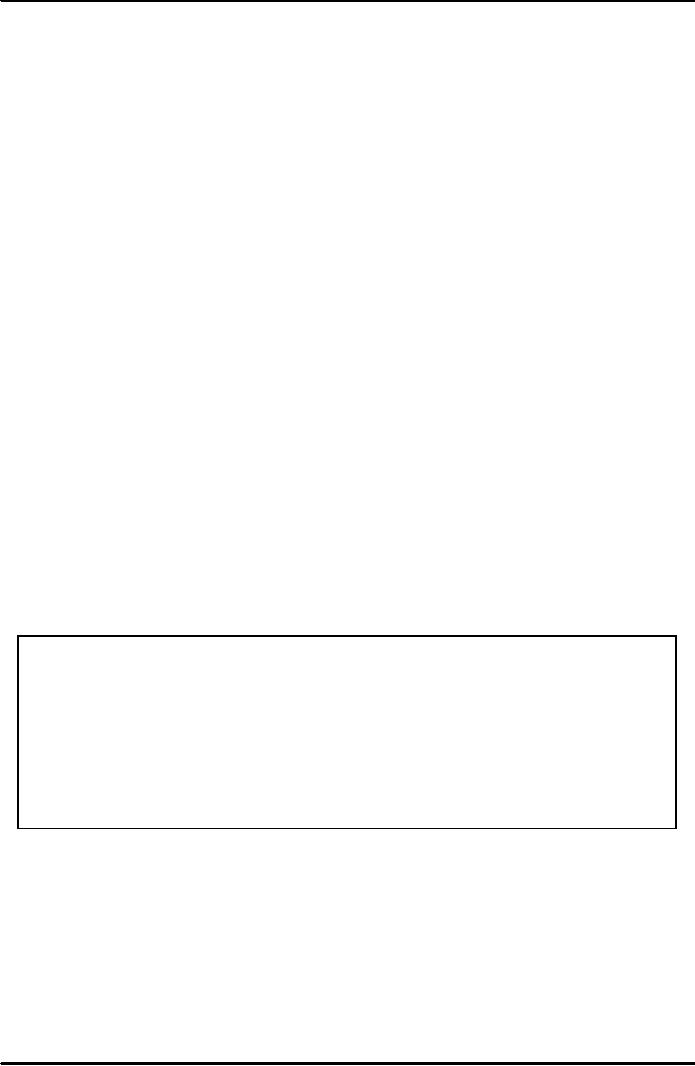 |
MONEY & THE PAYMENT SYSTEM:Distinctions among Money, Wealth, and Income |
| << FIVE CORE PRINCIPLES OF MONEY AND BANKING:Time has Value |
| OTHER FORMS OF PAYMENTS:Electronic Funds Transfer, E-money >> |

Money
& Banking MGT411
VU
Lesson
3
MONEY
& THE PAYMENT
SYSTEM
Money
Characteristics
of Money
Liquidity
Payment
system
Commodity
vs. Fiat Money
Cheques
Other
forms of payments
Future
of Money
Money
Money
is an asset that is generally
accepted as payment for
goods and services or repayment of
debt.
Not
the same as wealth or
income
Money
is a component of wealth that is held in
a readily- spend able
form
Money
is made up of
Coin
and currency
Chequing
account balances
Other
assets that can be turned
into cash or demand deposits
nearly instantaneously,
without
risk
or cost (liquid
wealth)
Distinctions
among Money, Wealth, and
Income
While
money, income and wealth are
all measured in some currency
unit, they differ
significantly
in their meaning.
People
have money if they have large
amounts of currency or big bank
accounts at a point in
time.
(Stock variable)
Someone
earns income (not money)
from work or investments over a
period of time. (Flow
variable)
People
have wealth if they have assets
that can be converted into
more currency than is
necessary
to pay their debts at a
point in time. (Stock
variable)
Characteristics
of Money
A
means of payment
A
unit of Account
A
Store of Value
A
means of payment
The
primary use of money is as a
means of payment.
Money
is accepted in economic exchanges.
Barter
is an alternative to using money
but it doesn't work very
well.
Barter
requires a "double coincidence of wants,"
meaning that in order for
trade to take place
both
parties must want what the
other has.
Money
finalizes payments so that buyers
and sellers have no further
claim on each other.
As
economies have become more complex and
physically dispersed the need
for money has
grown.
Just
as the division of labor and
specialization allow for
efficient production, money
allows for
efficient
exchange.
A
unit of Account
We
measure value using rupees
and paisas.
Money
is the unit of account that we
use to quote prices and record
debts.
6

Money
& Banking MGT411
VU
Money
can be referred to as a standard of
value.
Using
money makes comparisons of
value easy
Under
barter the general formula for n goods, we
will have n (n - 1) / 2 prices
Two
goods
1
price
3
goods
3
prices
100
goods
4,950
prices
10,000
goods
50
million prices
A
Store of Value
For
money to function as a means of
payment it has to be a store of
value too because it
must
retain
its worth from day to
day.
The
means of payment has to be
durable and capable of transferring
purchasing power from one
day
to the next.
Money
is not the only store of
value; wealth can be held in
a number of other forms.
Other
stores of value can be
preferable to money because
they pay interest or deliver
other
services.
However,
we hold money because it is
liquid, meaning that we can
use it to make
purchases.
Liquidity
is a measure of the ease with
which an asset can be turned
into a means of
payment
(namely
money).
The
more costly an asset is to turn
into money, the less liquid
it is.
Constantly
transforming assets into
money every time we wish to
make a purchase would
be
extremely
costly; hence we hold
money
Liquidity
Liquidity
is a measure of the ease an asset
can be turned into a means
of payment, namely
money
An
asset is liquid if it can be
easily converted into money
and illiquid if it is costly to
convert.
Cash
is perfectly liquid.
Stocks
and bonds are somewhat less
liquid.
Land
is least liquid.
The
Payments System
The
payment system is a web of
arrangements that allows for
the exchange of goods and
services,
as well as assets among different
people
Money
is at the heart of payment system!
Types
of Money
Commodity
Money Things that have
intrinsic value
Fiat
Money Value comes from
government decree (or
fiat)
Commodity
Money
The
first means of payment were
things with intrinsic value
like silk or salt.
Successful
commodity monies had the
following characteristics
They
were usable in some form by
most people;
They
could be made into standardized
quantities;
They
were durable;
They
had high value relative to
their weight and size so
that they were easily
transportable; and
They
were divisible into small
units so that they were easy
to trade
For
most of human history, gold
has been the most common
commodity money
Fiat
Money
Today
we use paper money that is
fiat money, meaning that
its value comes from
government
decree
(or fiat).
A
note costs about 0.04%
its worth to produce.
These
notes are accepted as
payment for goods or in settlement of
debts for two
reasons:
7

Money
& Banking MGT411
VU
We
take them because we believe we
can use them in the
future.
The
law says we must accept
them; that is what the words
"legal tender" printed on the
note
means.
As
long as the government
stands behind its paper
money, and doesn't issue too
much of it, we
will
use it. In the end, money is
about trust.
Fiat
or Commodity Money?
Does
money need to be backed by a commodity at
all?
The
logical answer to this
question is no.
If
the monetary system is stable and
functions effectively, "backing" is
expensive, inconvenient,
and
unnecessary.
Today,
money is only backed by confidence
that government will
responsibly limit the
quantity
of
money to ensure that money
in circulation will hold its
value.
Advantages
of Fiat Money
Fewer
resources are used to produce
money.
The
quantity of money in circulation
can be determined by rational human
judgment rather than
by
discovering further mineral
deposits--like gold or diamonds
Disadvantage
A
corrupt or pressured government
might issue excessive
amounts of money,
thereby
unleashing
severe inflation.
Cheques
Cheques
are another way of paying
for things, but
They
are not legal tender
They
are not even money.
Cheques
are instructions to the bank to
take funds from your
account and transfer those funds
to
the
person or firm whose name is
written in the "Pay to the Order
of" line.
When
you give someone a Cheque in
exchange for a good or service, it is
not a final payment;
A
series of transactions must
still take place that lead
to the final payment
Following
are the steps in the
process
1-
You
hand a paper cheque from your
bank to a merchant in exchange
for some good
2-
The
merchant deposits the cheque
into merchant's bank and merchant's
account is credited
3-
The
merchant's bank sends the cheque to the
local central bank
4-
The
Central Bank
(a)
Credits
the merchant's bank's reserve
account
(b)
Debits
your bank's reserve
account
(This
step involves money)
5-
The
Central Bank returns the cheque to
your bank
6-
Your
bank debits your Chequing
account by the amount of the
cheque
The
whole process is time consuming and
expensive;
Though
cheque volumes have begun to fall, paper
Cheques are still with us
because a cancelled
cheque
is legal proof of
payment
Other
Forms of Payments
Debit
Cards
Credit
Cards
Electronic
Funds transfers
Stored
Value Cards
8
Table of Contents:
- TEXT AND REFERENCE MATERIAL & FIVE PARTS OF THE FINANCIAL SYSTEM
- FIVE CORE PRINCIPLES OF MONEY AND BANKING:Time has Value
- MONEY & THE PAYMENT SYSTEM:Distinctions among Money, Wealth, and Income
- OTHER FORMS OF PAYMENTS:Electronic Funds Transfer, E-money
- FINANCIAL INTERMEDIARIES:Indirect Finance, Financial and Economic Development
- FINANCIAL INSTRUMENTS & FINANCIAL MARKETS:Primarily Stores of Value
- FINANCIAL INSTITUTIONS:The structure of the financial industry
- TIME VALUE OF MONEY:Future Value, Present Value
- APPLICATION OF PRESENT VALUE CONCEPTS:Compound Annual Rates
- BOND PRICING & RISK:Valuing the Principal Payment, Risk
- MEASURING RISK:Variance, Standard Deviation, Value at Risk, Risk Aversion
- EVALUATING RISK:Deciding if a risk is worth taking, Sources of Risk
- BONDS & BONDS PRICING:Zero-Coupon Bonds, Fixed Payment Loans
- YIELD TO MATURIRY:Current Yield, Holding Period Returns
- SHIFTS IN EQUILIBRIUM IN THE BOND MARKET & RISK
- BONDS & SOURCES OF BOND RISK:Inflation Risk, Bond Ratings
- TAX EFFECT & TERM STRUCTURE OF INTEREST RATE:Expectations Hypothesis
- THE LIQUIDITY PREMIUM THEORY:Essential Characteristics of Common Stock
- VALUING STOCKS:Fundamental Value and the Dividend-Discount Model
- RISK AND VALUE OF STOCKS:The Theory of Efficient Markets
- ROLE OF FINANCIAL INTERMEDIARIES:Pooling Savings
- ROLE OF FINANCIAL INTERMEDIARIES (CONTINUED):Providing Liquidity
- BANKING:The Balance Sheet of Commercial Banks, Assets: Uses of Funds
- BALANCE SHEET OF COMMERCIAL BANKS:Bank Capital and Profitability
- BANK RISK:Liquidity Risk, Credit Risk, Interest-Rate Risk
- INTEREST RATE RISK:Trading Risk, Other Risks, The Globalization of Banking
- NON- DEPOSITORY INSTITUTIONS:Insurance Companies, Securities Firms
- SECURITIES FIRMS (Continued):Finance Companies, Banking Crisis
- THE GOVERNMENT SAFETY NET:Supervision and Examination
- THE GOVERNMENT'S BANK:The Bankers' Bank, Low, Stable Inflation
- LOW, STABLE INFLATION:High, Stable Real Growth
- MEETING THE CHALLENGE: CREATING A SUCCESSFUL CENTRAL BANK
- THE MONETARY BASE:Changing the Size and Composition of the Balance Sheet
- DEPOSIT CREATION IN A SINGLE BANK:Types of Reserves
- MONEY MULTIPLIER:The Quantity of Money (M) Depends on
- TARGET FEDERAL FUNDS RATE AND OPEN MARKET OPERATION
- WHY DO WE CARE ABOUT MONETARY AGGREGATES?The Facts about Velocity
- THE FACTS ABOUT VELOCITY:Money Growth + Velocity Growth = Inflation + Real Growth
- THE PORTFOLIO DEMAND FOR MONEY:Output and Inflation in the Long Run
- MONEY GROWTH, INFLATION, AND AGGREGATE DEMAND
- DERIVING THE MONETARY POLICY REACTION CURVE
- THE AGGREGATE DEMAND CURVE:Shifting the Aggregate Demand Curve
- THE AGGREGATE SUPPLY CURVE:Inflation Shocks
- EQUILIBRIUM AND THE DETERMINATION OF OUTPUT AND INFLATION
- SHIFTS IN POTENTIAL OUTPUT AND REAL BUSINESS CYCLE THEORY